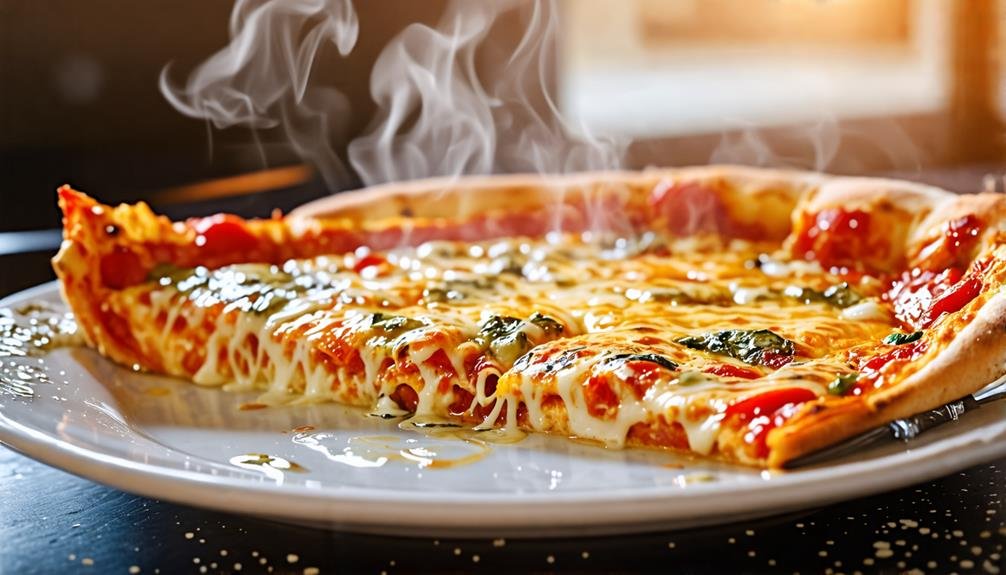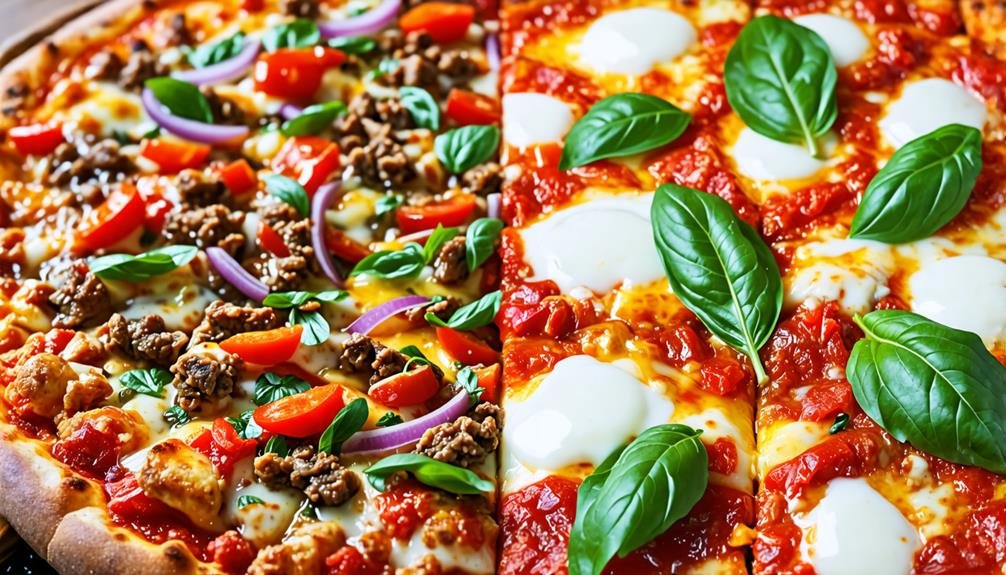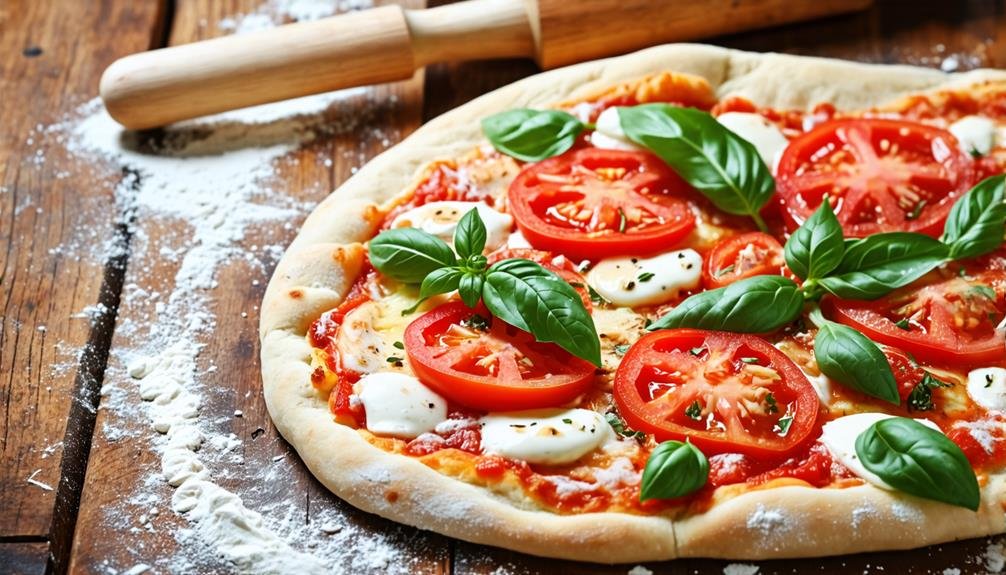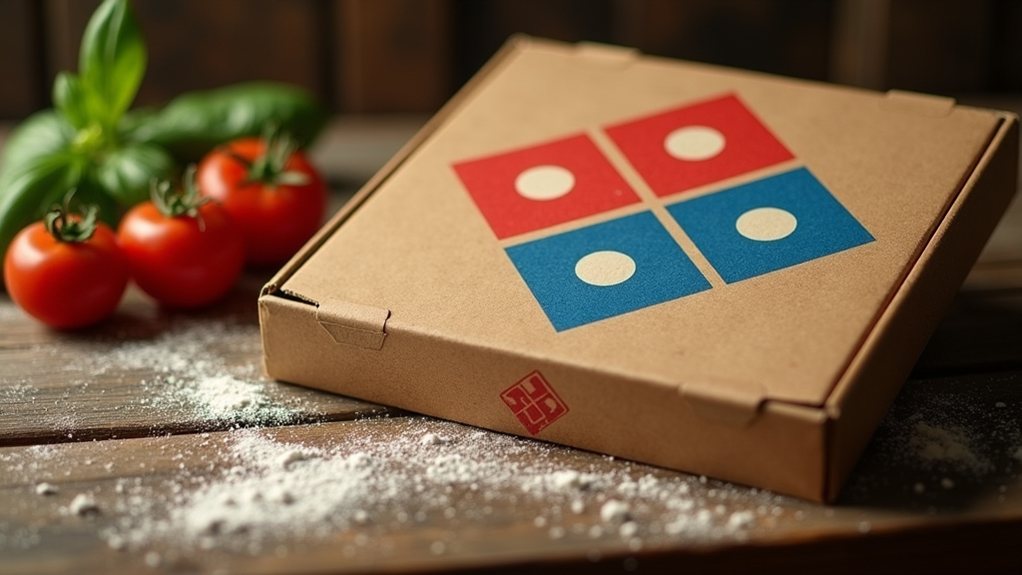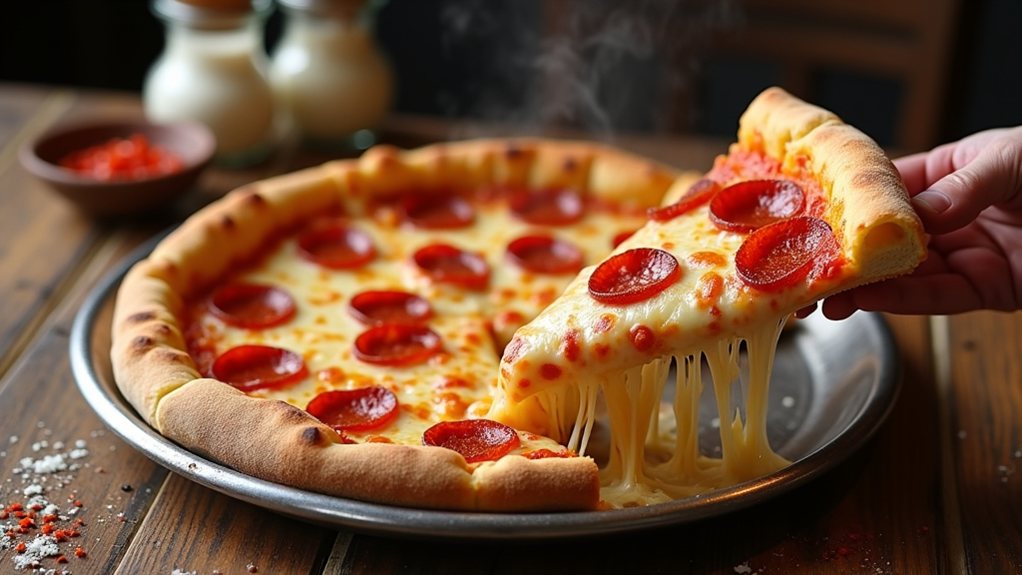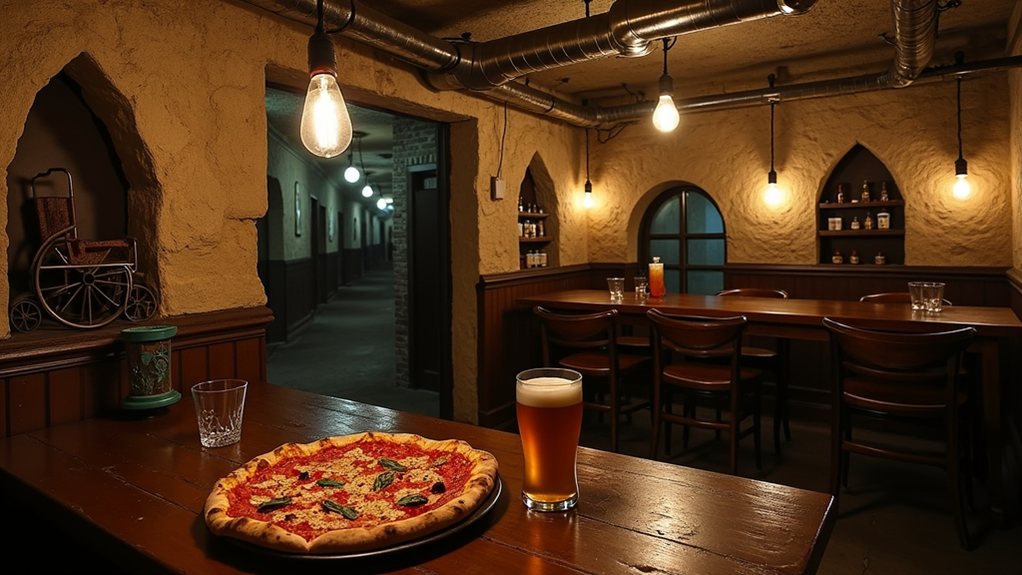The water trick for reheating pizza involves adding moisture either in the oven or on the stovetop, which greatly improves the taste and texture. When reheating in the oven, place a dish of water alongside the pizza to create steam, ensuring the crust remains crispy while the cheese melts perfectly. Alternatively, the skillet method utilizes a light mist of water to generate steam, keeping the toppings warm without drying them out. This technique not only revives the original flavors but also enriches the entire experience of leftover pizza. Exploring different methods can yield even better results for your reheating strategy.
Benefits of Using Water
Incorporating water during the reheating process of leftover pizza significantly enhances the quality of the dish by preventing dryness and improving texture. This technique, often referred to as the pizza water hack, elevates the overall experience, making it reminiscent of a freshly baked slice. When reheating pizza, the addition of moisture preserves the integrity of the cheese, ensuring it remains gooey and flavorful, while also reviving the crust's crispiness.
Utilizing water during reheating is especially effective with methods like skillet or oven techniques. For instance, adding a small amount of water to a heated cast iron skillet creates steam, which envelops the pizza and prevents it from drying out. This tip is essential for elevating your reheating skills. Moreover, adjusting the water amount allows for experimentation, helping you discover the ideal balance for your taste preferences. Overall, incorporating water into your reheating strategy enriches the flavor and guarantees that your pizza remains a delightful treat, rather than a disappointing snack.
The Oven Reheating Technique
Reheating pizza in an oven ensures that the crust remains crispy and the cheese melts beautifully, mimicking a fresh pizza experience. This technique is much better than using a microwave, which tends to make pizza soggy and less appetizing.
To begin, set your oven, such as a Whirlpool or GE model, to 475 degrees Fahrenheit. For optimal results, place a pizza stone inside the oven and include a small dish of water to introduce steam, which helps maintain the moisture of the pizza.
When the oven reaches the desired temperature, arrange your slices on the preheated stone and bake for about 3 to 6 minutes. This short baking time allows the crust to crisp up, while the cheese achieves the perfect melt, providing a delightful texture.
Alternatively, if you want a gentler approach, you can adjust the oven to 275 degrees Fahrenheit. Lightly spritz the pizza slices with water, cover them with aluminum foil, and bake for around 20 minutes. This gradual reheating method ensures the pizza retains its flavors without becoming overcooked. By mastering the oven reheating technique, you can elevate your leftover pizza enjoyment to new heights.
Skillet Method for Quick Heating
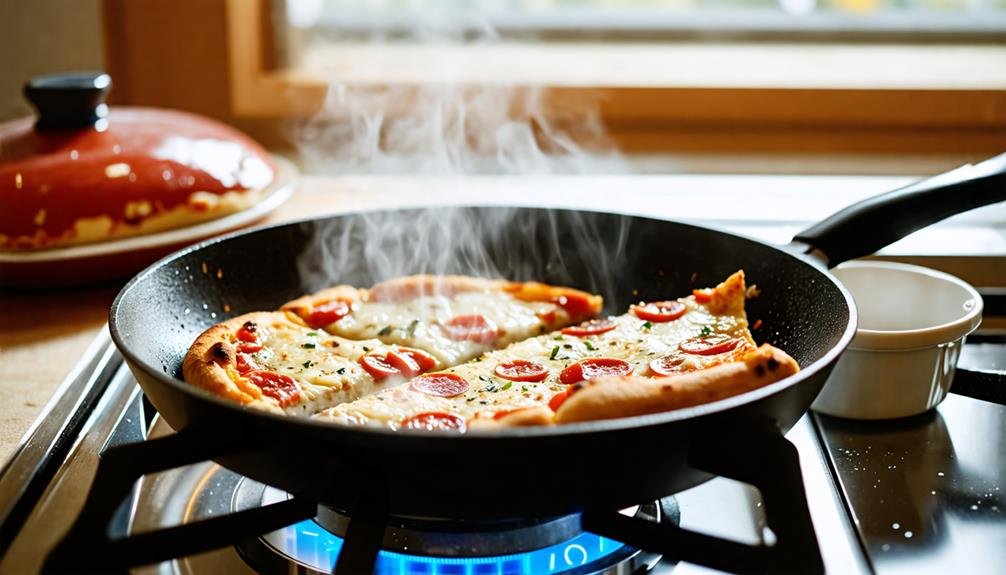
The skillet technique provides a fast and effective method for reheating pizza, keeping the crust crispy and the toppings warm. This approach requires a cast iron or non-stick frying pan heated over medium flame, ensuring even heat distribution. Once the pan is warmed, place a slice of Domino's or Papa John's pizza in it, adding a couple of tablespoons of water. The water generates steam, helping to heat the toppings without drying them out.
Cover the skillet with a tight lid to capture the steam and encourage uniform heating. This method not only revitalizes the mozzarella, making it gooey and delicious, but also preserves the structure of the crust, delivering that satisfying crunch. The reheating process typically lasts around 5 to 8 minutes, depending on the thickness of the slice. After taking the pizza from the skillet, let it cool for a moment before enjoying. This technique is perfect for anyone looking for a quick fix that avoids the lengthy oven process, making it an ideal choice for pizza lovers eager to savor their leftovers without compromising on quality.
Expert Tips for Best Results
To achieve the finest results when reheating your favorite pizza, consider using a light mist of water on the slices. This technique enhances moisture and prevents dryness, enriching the flavor while preserving the delightful texture. Here are three expert tips to elevate your pizza reheating experience:
- Temperature Control: Keep the temperature appropriate for your chosen reheating method. Preheating your oven to 475 degrees Fahrenheit ensures a crunchy crust, while a lower temperature allows for a more gradual reheating process.
- Water Application: Test various amounts of water. A gentle mist may be enough for thin crusts, but thicker crusts may benefit from a bit more moisture. The aim is to generate steam without making the pizza overly soggy.
- Heating Durations: Modify heating durations based on the pizza's thickness and toppings. For thicker slices or those loaded with toppings like pepperoni or mushrooms, additional time may be required for thorough heating. Always keep an eye on the pizza to avoid burning.
Common Mistakes to Avoid
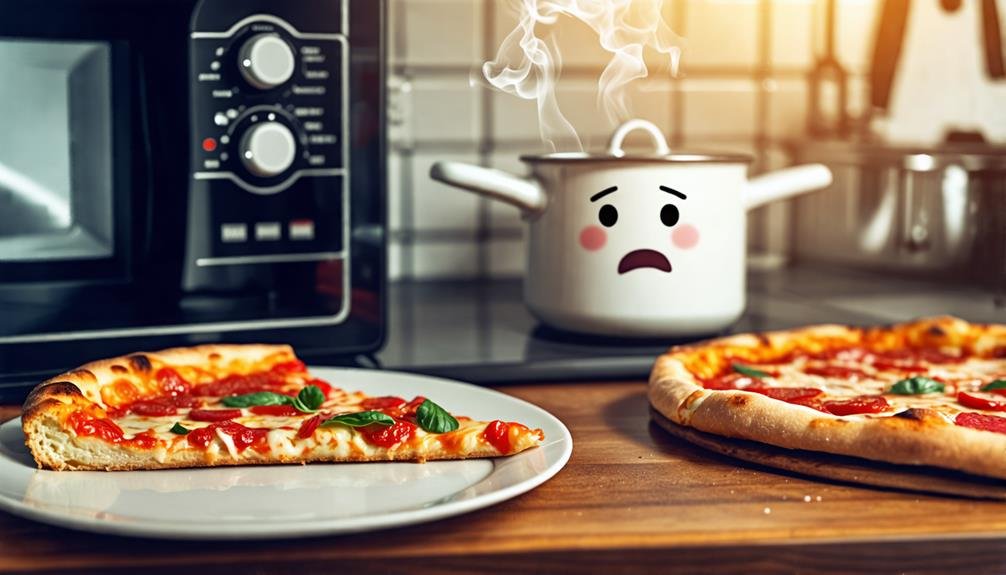
Monitoring the reheating process is essential to avoid burnt pizza. Staying attentive during cooking is crucial. A common error is setting the temperature too high, which can char the crust while leaving the cheese insufficiently melted. Instead, adhere to the recommended temperatures for your chosen method, whether using an oven or a skillet.
Another mistake is neglecting to add moisture, which is vital for achieving the desired texture. Placing a dish of water in the oven or spritzing the pizza with water before reheating can significantly enhance the result. On the other hand, using the microwave often leads to a chewy or soggy outcome, failing to restore the pizza's original quality.
Additionally, considering the thickness and type of pizza is important for accurate cooking times. Thicker crusts, like those from Domino's, generally require longer reheating, while thinner slices, such as those from Papa John's, may need less time. Finally, be careful not to cover the pizza too tightly while reheating in a skillet; this can trap excess steam, resulting in unwanted sogginess. By avoiding these pitfalls, you can enjoy pizza that tastes nearly as fresh as it did when it was first made.
